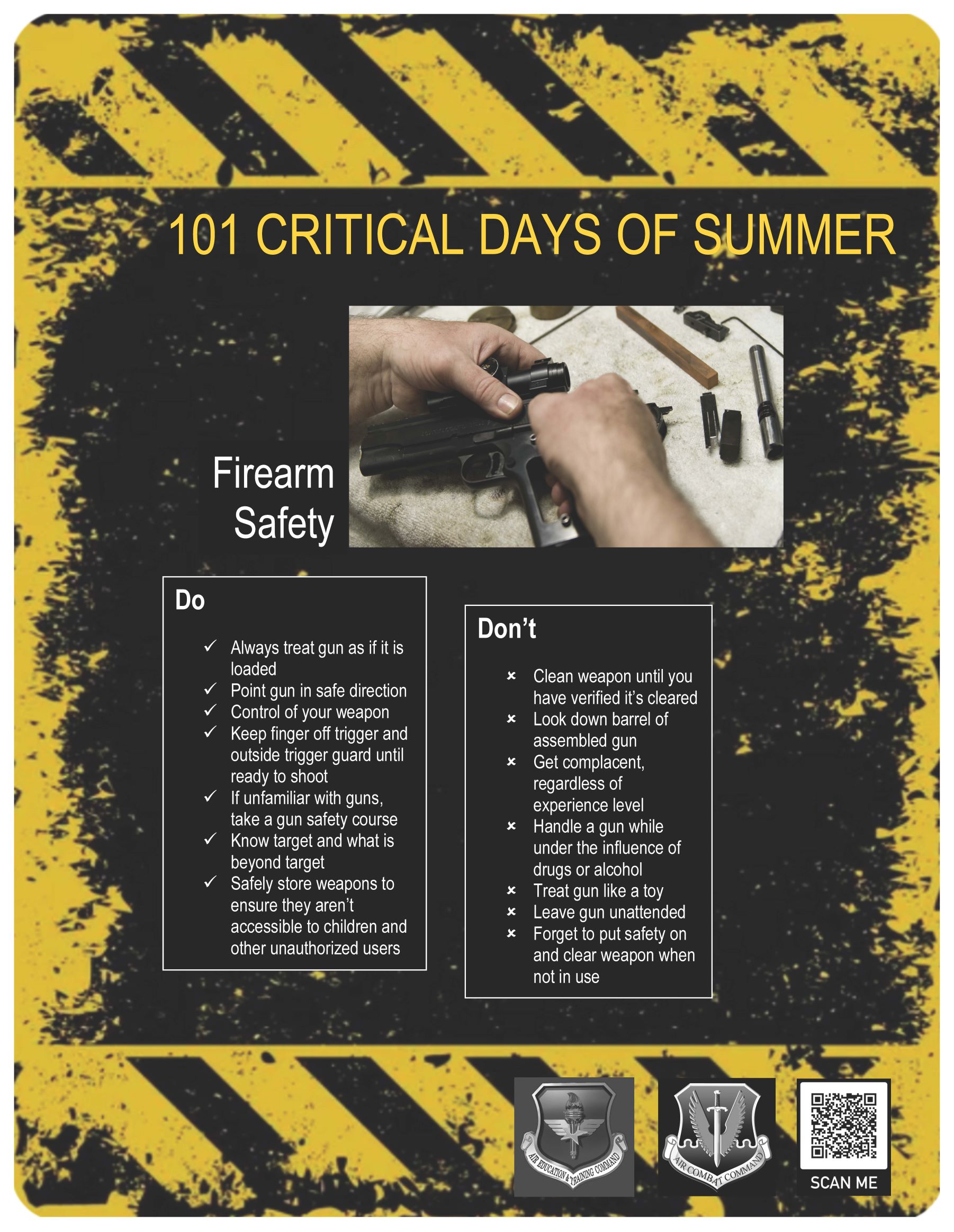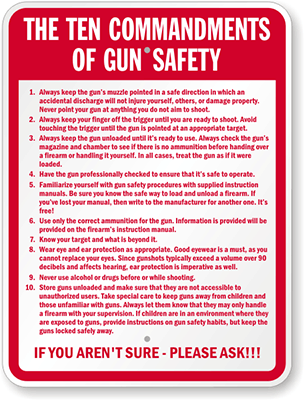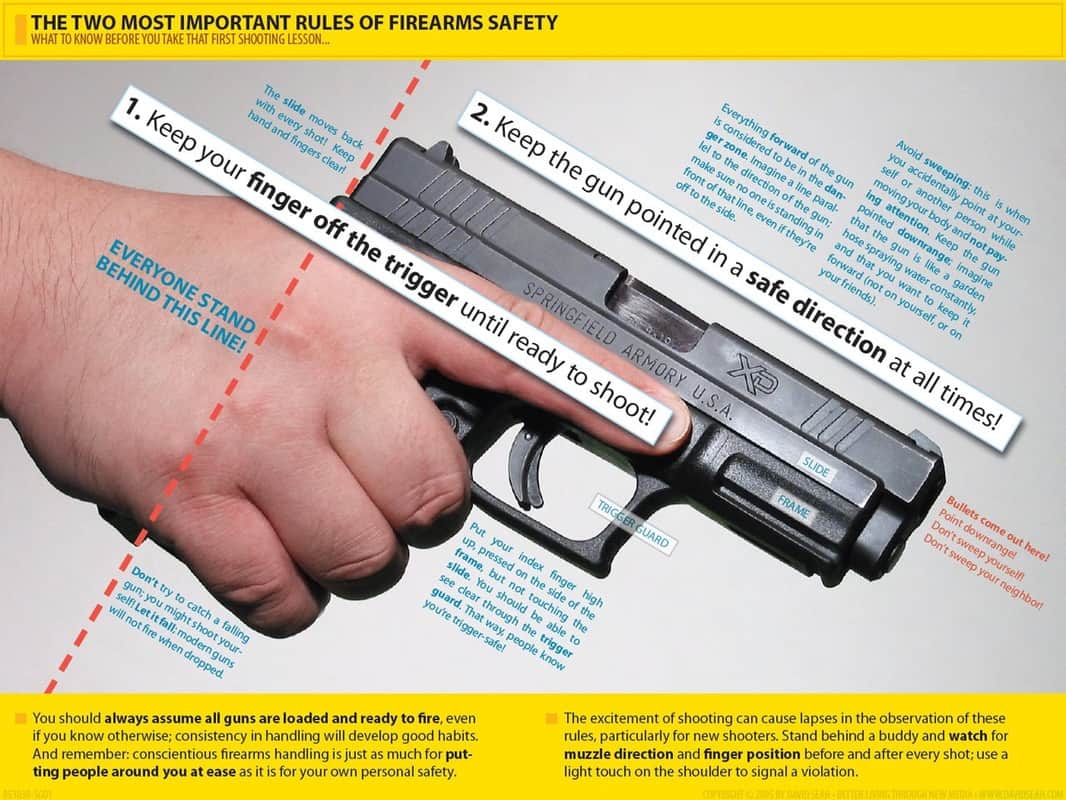To tell if a rifle is on safety, check the position of the safety selector switch. This switch is usually marked with “S” for safe or colored red when in fire mode.
Ensuring your rifle is on safety is a fundamental aspect of responsible gun handling. Before handling any firearm, it’s crucial to familiarize yourself with its specific safety mechanisms, as these can vary between models and manufacturers. Typically, rifles feature a safety selector that, when engaged, prevents the trigger from being activated.
Recognizing the indicators of a rifle’s safety status not only promotes safe practices but is also a sign of respect towards the power of the firearm. For both seasoned enthusiasts and novice users, identifying and confirming the safety position is an essential step before proceeding with any further action with a rifle. Remember, always treat every firearm as if it’s loaded, even if the safety is engaged.
Recognizing Different Safety Mechanisms
Understanding how to tell if a rifle is on safety is vital. It helps prevent accidents. Various guns have different safety features. Exploring these can help you stay safe.
Visual Indicators On Firearms
Most rifles have visual signs to show if they are safe. Look for:
- Color-coded signals — A red dot means ‘fire’. A white or green dot means ‘safe’.
- Safety buttons or levers marked with ‘S’ for safe and ‘F’ for fire.
- Positional indicators where the position itself shows the mode.
Always check twice. Even if you see the safety signal, confirm it.
Auditory And Tactile Signals
Listening and feeling can confirm safety. Here’s how:
- Click sounds — Some rifles make a click when set to safe.
- Feeling the lever — Move it. Safety on often feels stiffer.
Check with both senses. Use your eyes and hands.
The Basics Of Rifle Safety Features
Understanding how to check if a rifle is on safety is crucial for anyone handling firearms. Each rifle has built-in mechanisms designed to prevent accidental discharges. Familiarizing oneself with these safety features is a key step towards responsible gun ownership. Let’s explore the basic operations and types of rifle safety mechanisms that are commonly encountered.
Manual Safety Operations
Manual safeties are features that shooters engage with physically. They are usually found as a button, lever, or switch on the rifle. To engage or disengage the safety, one must typically perform the following steps:
- Locate the Safety: It’s often near the trigger or on the bolt.
- Check Indicator: Many rifles have a color code or an ‘S’ and ‘F’ sign indicating safe and fire.
- Engage/Disengage: Flip or push the safety to the correct position.
Remember to always treat a rifle as if it’s loaded, even when the safety is engaged.
Automatic Safeties In Modern Rifles
Modern rifles may come with automatic safeties. These are designed to be user-friendly and minimize risks automatically. Features can include:
| Type of Automatic Safety | Description |
|---|---|
| Decocking Safety | Allows the hammer to be safely lowered without firing. |
| Magazine Disconnect | Prevents firing when the magazine is removed, even if a round is chambered. |
| Grip Safety | Must be fully engaged with a firm grip to fire the weapon. |
While these features enhance safety, always perform a manual check. Familiarize with your rifle’s specific safety features as they may vary from one model to another.
Checking The Safety Status
Checking the Safety Status on a rifle is a crucial step for any gun handler. It ensures that the firearm is in a non-firing state. This safety check is vital before handling, cleaning, or transporting a rifle. The following section will guide you through this critical process meticulously.
Step-by-step Guide
Follow this step-by-step guide to assess your rifle’s safety status accurately:
- Point the rifle in a safe direction.
- Ensure the rifle is unloaded by removing the magazine and checking the chamber.
- Locate the safety mechanism, which can vary by model. Look for a switch, button, or lever.
- Check the safety indicator, a marker showing if the safety is on or off.
- Test the safety by gently trying to move the trigger while on safety. It should not fire.
- Always double-check the safety status regularly.
Common Mistakes To Avoid
Bearing in mind these common pitfalls can prevent accidents:
- Never assume the safety is engaged without checking.
- Avoid handling a rifle before checking the safety status.
- Be mindful of the safety position during transportation or storage.
- Refrain from pulling the trigger to test the safety with a loaded chamber.

Credit: www.amazon.com
Safe Handling Practices
Understanding how to tell if a rifle is on safety is crucial for any gun owner. Proper safe handling practices are not just important, they are necessary to prevent accidents. Before diving into details, let’s review some core safety measures that every rifle handler should engrave into their routine.
The Four Fundamental Gun Safety Rules
Always practice these basic rules:
- Treat every gun as if it’s loaded. Even if you believe it’s not, act like it is.
- Never point a gun at anything you don’t intend to shoot. This is a cardinal rule in handling firearms.
- Keep your finger off the trigger until ready to fire. This prevents accidental discharges.
- Be sure of your target and what’s beyond it. Bullets can go through targets and hit something else.
Tips For Secure Rifle Storage
Here are simple yet effective ways to store your rifle safely:
| Storage Option | Features |
|---|---|
| Gun Safe | Lockable, durable, and often fireproof |
| Trigger Locks | Prevent the trigger from being pulled |
| Cable Locks | Similar to trigger locks but use a cable |
| Locking Gun Cases | Portable and can be used with padlocks |
Empty all ammunition before storage. Ensure your rifle’s chamber and magazine are clear. Use secure locking mechanisms to prevent unauthorized access. Keep the storage area in a cool, dry place to prevent rust and decay. Teach others in your home about the importance of safe storage.
Troubleshooting Safety Mechanism Issues
Operating a rifle safely hinges on a functional safety mechanism. Recognizing when it malfunctions is crucial. This section helps identify a faulty safety. It also guides on when to involve a gunsmith.
Signs Of A Faulty Safety
A safety mechanism that acts up gives specific cues. Here are signs to watch for:
- Stiff Movement: The safety should toggle smoothly. If resistance occurs, it may need a look.
- No Audible Click: A distinct sound should be heard when engaged or disengaged. Silence suggests a problem.
- Loose Fit: A safety should sit tight with no wobble. Play in the mechanism speaks of wear or damage.
- Failure to Engage: It should lock in position firmly. If it doesn’t, the safety isn’t reliable.
When To Seek Professional Assistance
Some issues call for expert attention. Here’s when to get help:
- If troubleshooting steps fail, enlist a professional.
- Complex mechanisms not addressed in user manuals need a gunsmith’s touch.
- Routine service checks catch faults early. They keep safeties functional.
Remember, rifles are dangerous. A compromised safety demands immediate action.

Credit: www.safety.af.mil

Credit: www.mysafetysign.com
Frequently Asked Questions Of How To Tell If A Rifle Is On Safety
How Do You Know When Your Gun Is On Safety?
Check the gun’s safety mechanism, usually a switch or button, to ensure it’s in the safe position. Consult the firearm’s manual for specific safety feature details.
Is Safety On A Gun Up Or Down?
The position of a gun’s safety can vary; typically, “up” or “forward” engages the safety, while “down” or “backward” disengages it. Always consult the firearm’s manual to ensure correct operation.
Where Is The Safety On A Rifle?
The safety on a rifle is typically found near the trigger or bolt. Its location can vary depending on the rifle’s make and model. Always refer to the firearm’s manual for specific instructions.
Is Safety On A Rifle Forward Or Back?
The safety on a rifle is typically in the “safe” position when pushed forward and in the “fire” position when pulled back. Always check the manufacturer’s instructions for your specific rifle, as mechanisms can vary.
Conclusion
Always prioritize safety when handling rifles. Ensuring the safety is engaged can prevent accidents. Familiarize yourself with your rifle’s specific safety features, which can vary. Regular checks and proper training are crucial. Remember, a responsible gun owner always treats firearms with caution and respect.



